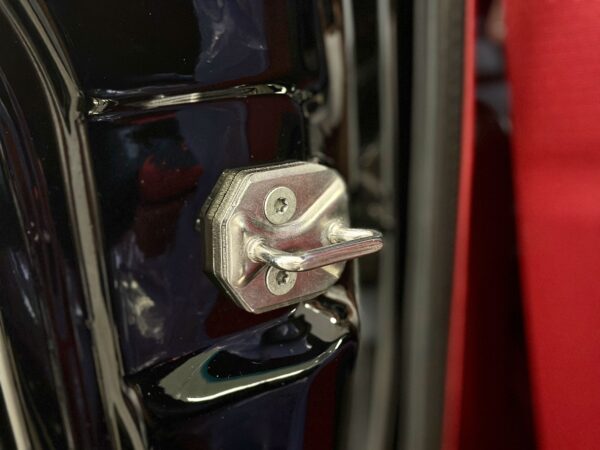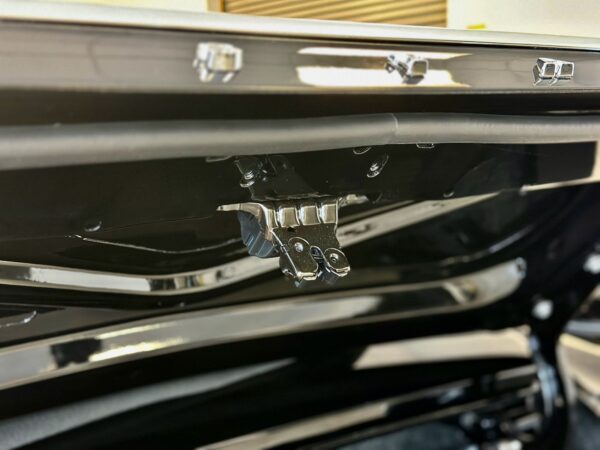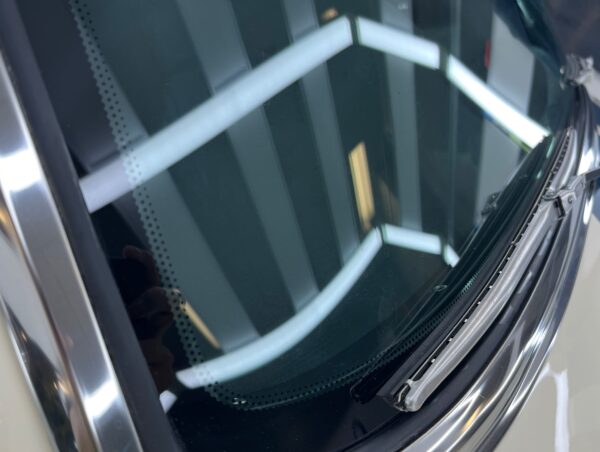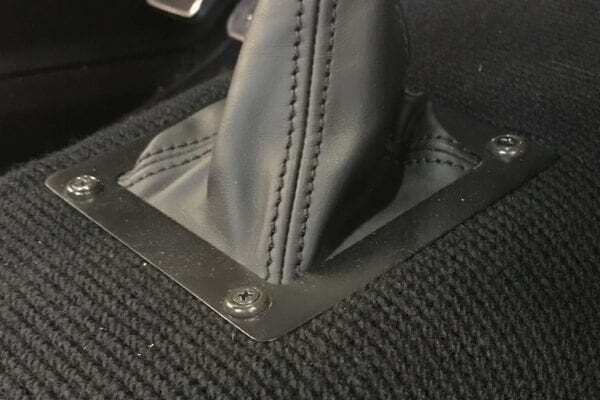








































Transcript +
Hi, I’m Tom Scarpello of Revology Cars, and this is car number 145, a 1968 Mustang GT Cobra Jet in Acapulco Blue Metallic with Black Nappa leather interior. Today, I’m going to take you on a walk around of this car, and we’re going to go for a drive. Let’s get started!
Okay, 1968 Mustang GT Cobra Jet. So, what is a Cobra Jet? Well, back in 1968, the Cobra Jet was the biggest, baddest Mustang available short of the Shelby’s. I say biggest. It was the biggest displacement engine that was ever put in a Mustang. 428 cubic inches, and it put out 335 gross horsepower. It was the fastest Mustang ever. In fact, Ford had to change their test equipment at the Arizona approving ground because it was the fastest car that they had ever tested there.
So, what is the Revology Cobra Jet? Well, we have this really awesome supercharged engine, 710 hp, that’s in our Shelby GT500. We thought it would be cool to put it in the GT model. This is the first one, the first Revology 1968 Mustang GT Cobra Jet. So, let’s take a close look at it.
We had to use a different hood to get the clearance for the supercharger. If you look right into the front of the hood, you can see all kinds of cool mechanical stuff going on. It kind of tips you off that there’s something special under the hood. If you don’t notice that, maybe you’ll notice the Cobra Jet badge on the side of the scoop and the black stripe up the middle for the hood and cowl is also unique to the Cobra Jet models.
So, at the front, the fog lamps, the ‘68 grille treatment, LED headlamps, as with all Revology Mustangs, but these look very much like the old seal beams. Now, at the side, this car is equipped with Torque Thrust wheels, and these are a 17 x 9 and a half. And they’re fitted with Michelin Pilot Sport tires. It’s a 275 40 ZR 17, so lots of grip, really, really nice handling. At the rear of the car, everything here looks all original, with the exception of the exhaust tips, which obviously are a lot larger than the original quad tips.
So, any discussion of the Cobra Jet would be remiss without a discussion of the engine. And as I mentioned earlier, this is our 710 hp supercharged five-liter Ti-VCT, also affectionately known as the Coyote V8 engine. It’s the same engine that goes into the Mustang. This one has a Roush supercharger and calibration.
Now, for us, really one of the major challenges that we have across the board at Revology Cars is the integration of modern technology into the vintage architecture. Because modern cars are much larger, the components themselves are much larger. This engine physically is much larger. And as you can see, it took a lot of work to package everything.
One of the challenges, specifically with the supercharged application, is getting it low enough in the car to where it will fit under a stock hood, or at least a hood that is like this one. That really, this has about the same clearance as the Shelby GT500 hood. And that requires use of an aluminum sub-frame that allows us to lower the engine slightly.
But then there’s no place to put the oil filter. Now, a lot of people would just say, oh, we’ll just put a shorter oil filter in, and you’re fine. Well, but that’s not how we do things at Revology. So, we engineered an external oil cooling system and an external oil filter location. So, the cooling system, actually, where the factory oil filter is located, you’ve got an adapter that then routes the oil through the external heat exchanger that’s mounted here. So, it gets a lot of flow through the grille, and then it runs outside of the apron and under the fender. And we’ve got a large oil filter. It’s actually a Ford diesel truck oil filter that has the flow characteristics that we need.
So, we’ve get, you know, really good flow and improves oil cooling, which is important because a supercharged engine generates more heat, and that means you need more cooling capacity. So, a lot of work went into that, but the result is outstanding, and it’s definitely worth the effort. So, you’ve got a car that not only puts out the power, it does it reliably, it does it consistently. It doesn’t overheat. The oil stays cool. You can have complete confidence taking it anywhere you want to go.
So, all of our supercharged cars get our heavy-duty driveline. We actually developed the heavy-duty driveline specifically for the supercharged application. And that consists of a carbon fiber drive shaft, 35 spline rear axles, a strange S-track, limited slip, a finned aluminum diff cover.
And on the manual transmission cars, you get a twin disc clutch and the overall feel of the car — ergonomics is basically how the human interfaces with the machine. And it’s so important. You drive some cars, and it feels like the steering was designed by a different team than the people who designed the brakes. Like, one is really soft and the other one’s really hard or whatever. They just don’t feel like they were integrated or designed together. And getting all those little details right, so that they’re integrated and it all feels like a consistent package or consistent approach is so important.
This car, it’s a really high-performance car. It’s got fantastic acceleration. It’s got a lot of grip, braking capability. It really is a serious performance car yet we didn’t want to make it a chore to drive. The whole car is masculine. This is like testosterone on wheels, but the steering is weighted. The gear shift, it’s solid. It’s not heavy, but you feel what you’re doing. It’s not like a little two fingers thing. I mean, you feel it. The clutch is not overly heavy, but it’s firm. The brake pedal, it’s firm. Everything is just firm. It just kind of reminds you that you’re driving a serious car, and there’s nothing wrong with that. Everything doesn’t have to be appealing to everyone. You just need to be everything to someone.
Subscribe to our newsletter to learn about our latest news and updates.